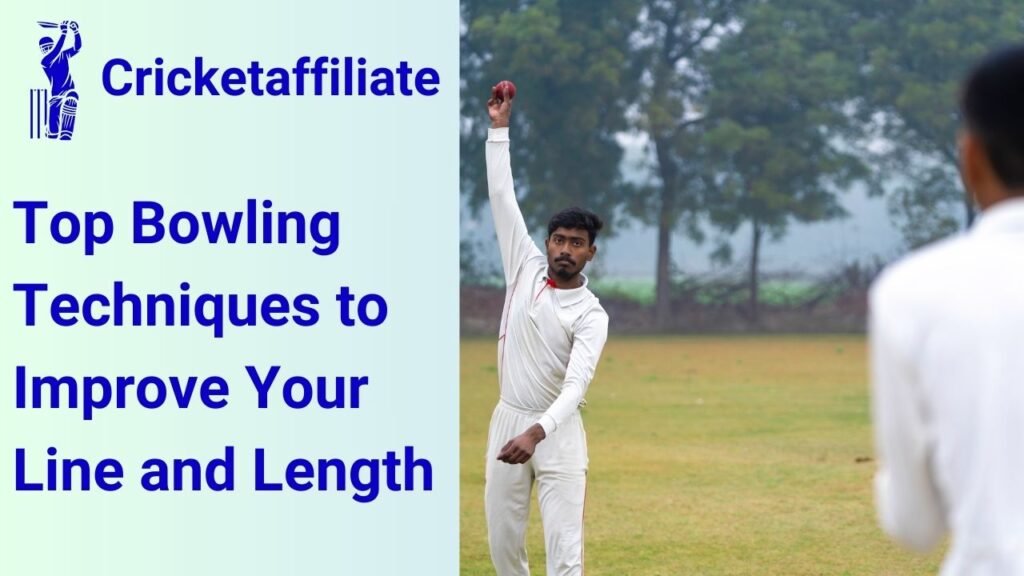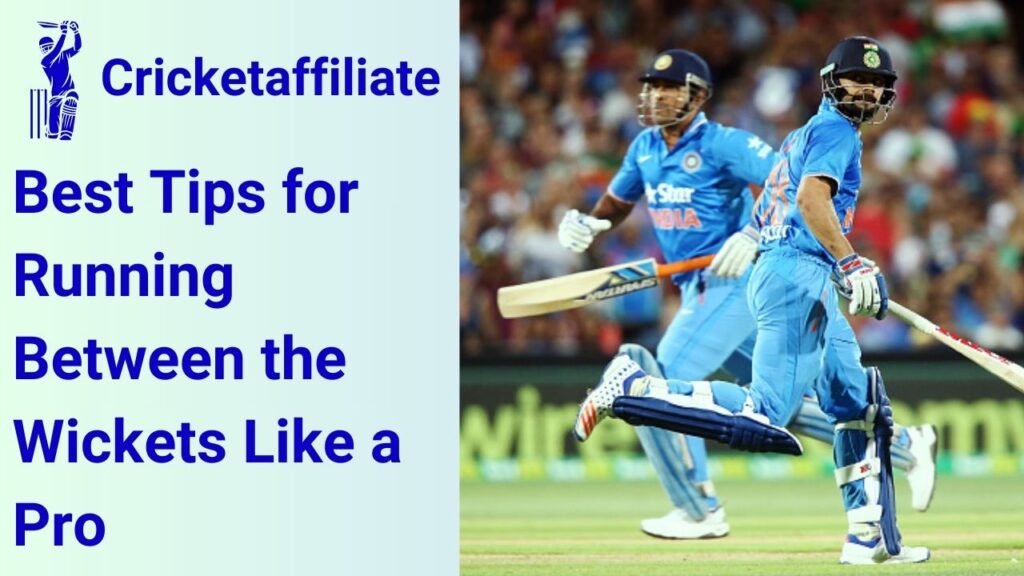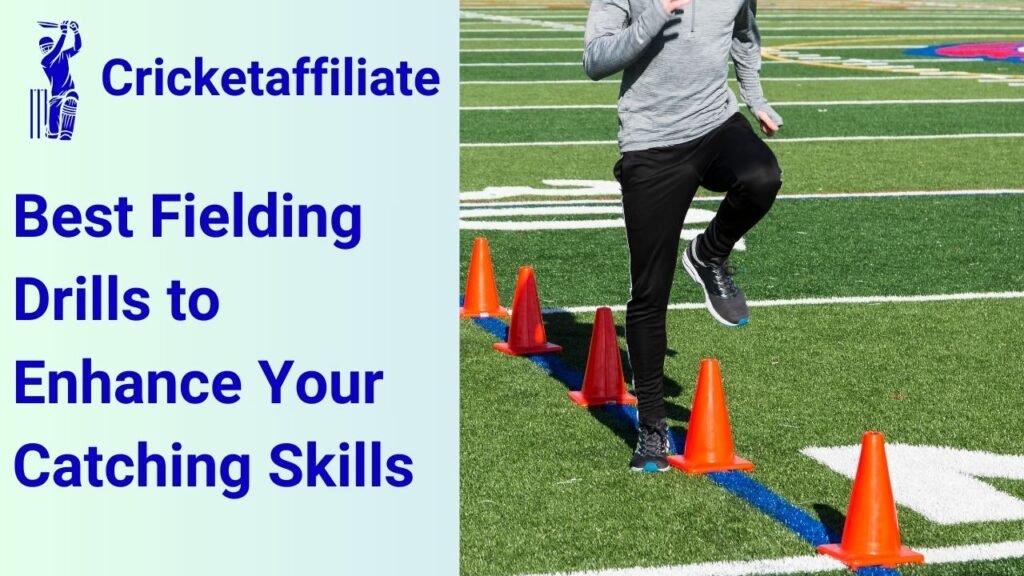Cricket is a game of precision and strategy, and for bowlers, mastering line and length is the key to success. Whether you’re an aspiring fast bowler or a spin maestro, controlling the ball’s direction and distance can make the difference between a wicket and a boundary. This article dives deep into the top bowling techniques to improve your line and length, helping you refine your skills and dominate on the pitch.
Why Line and Length Are Crucial in Bowling
The terms “line” and “length” define where the ball travels and how it lands on the pitch. The line refers to the ball’s trajectory concerning the stumps, while the length indicates the distance from the bowler to where the ball bounces. Maintaining consistent line and length can pressure batsmen, limit scoring opportunities, and increase the chances of taking wickets.
Key Benefits of Perfecting Line and Length
- Wicket-taking opportunities: A good line and length forces errors from batsmen.
- Builds pressure: Accurate deliveries can dry up runs.
- Adaptability: Allows bowlers to adjust their strategy based on pitch conditions.
- Consistency: Makes you a reliable bowler under any conditions.
Top Bowling Techniques to Improve Your Line and Length
Mastering your line and length involves fine-tuning your skills, understanding pitch dynamics, and maintaining mental focus. Below are some proven techniques to elevate your game.
1. Develop a Repeatable Bowling Action
A stable and repeatable bowling action is fundamental to improving consistency.
- Focus on alignment: Ensure your head, hips, and feet remain aligned during delivery.
- Arm position: Maintain a high-arm action to provide better control over the ball.
- Follow through: A strong follow-through improves momentum and accuracy.
A biomechanically sound action reduces the risk of injury and increases the chances of landing the ball precisely on your desired spot.
2. Use Target Drills to Sharpen Accuracy
Practicing with specific targets can dramatically improve your line and length. Here’s how:
- Place cones or markers on areas you want to hit, such as good-length zones.
- Bowl repeatedly at these targets to build muscle memory.
- Gradually introduce variations to simulate match conditions.
This drill reinforces accuracy and teaches you to hit the same spot under pressure.
3. Understand the Pitch Conditions
Every cricket pitch behaves differently, and tailoring your bowling accordingly can improve results. Analyze factors like:
- Bounce: Does the pitch offer extra lift?
- Swing: Is the atmosphere aiding movement?
- Spin: How much turn is available for spinners?
Adapting your length to exploit pitch behavior gives you a tactical edge over batsmen.
4. Focus on Grip and Release
The way you grip and release the ball significantly impacts accuracy.
- Grip the seam: For seam bowlers, keeping the seam upright helps the ball move consistently.
- Finger positioning: Spinners can tweak grip to control spin and drift.
- Release point: A higher release point increases the likelihood of hitting the ideal length.
By mastering grip and release, you gain control over where and how the ball lands.
5. Use Video Analysis for Feedback
Technology can be a game-changer when refining your bowling technique.
- Record your sessions to identify flaws in your action.
- Analyze the trajectory and landing points of your deliveries.
- Compare your performance against professional bowlers for insights.
Video analysis offers a clear picture of what’s working and what needs improvement.
6. Build Mental Resilience
Bowling accurately under pressure requires focus and discipline.
- Practice mindfulness to stay calm during tense situations.
- Visualize hitting your desired spots before delivering the ball.
- Break your goals into smaller targets, such as bowling six good balls in an over.
A strong mindset helps maintain consistency even during high-pressure matches.
7. Work on Fitness and Core Strength
Physical fitness is the backbone of any successful bowler. A strong, fit body enables you to execute your plans effectively.
- Core exercises: Build core strength to stabilize your action.
- Flexibility drills: Improve your range of motion for smoother deliveries.
- Endurance training: Boost stamina to maintain accuracy throughout long spells.
Proper fitness not only enhances your bowling but also reduces injury risks.
8. Experiment with Variations
Adding variety to your bowling arsenal can improve both your line and length.
- Yorkers: A perfectly placed yorker can unsettle batsmen.
- Bouncers: Mixing shorter deliveries keeps batsmen guessing.
- Slower balls: Ideal for disrupting timing and rhythm.
While practicing variations, ensure they don’t compromise your core accuracy.
Table: Ideal Bowling Lengths for Different Pitch Conditions
| Pitch Condition | Ideal Length | Bowling Strategy |
|---|---|---|
| Green Pitch | Back of a good length | Exploit seam movement. |
| Dry/Flat Pitch | Fuller length | Induce swing or reverse swing. |
| Dusty Pitch | Good length (spinners) | Generate maximum turn. |
| Hard/Bouncy Pitch | Short of a length | Use bounce to trouble batsmen. |
Common Mistakes to Avoid
Even skilled bowlers can fall into bad habits that disrupt their accuracy.
- Overstepping: Leads to no-balls and ruins rhythm.
- Rushing the delivery: Often results in loss of control.
- Neglecting warm-ups: Increases injury risk and affects consistency.
- Over-reliance on speed: Prioritize precision over pace.
Focusing on basics helps you avoid these pitfalls.
FAQs on Bowling Line and Length
1. What is the difference between line and length in cricket?
Line refers to the ball’s direction (e.g., off-stump, leg-stump), while length is the distance where the ball lands on the pitch.
2. How can I practice bowling consistently?
Target drills, video analysis, and regular practice with specific objectives can help improve consistency.
3. Why is maintaining a good length important?
A good length forces batsmen to decide whether to play forward or back, increasing the likelihood of errors.
4. Does fitness affect bowling accuracy?
Yes, fitness improves stamina and reduces fatigue, enabling bowlers to maintain consistent performance over long spells.
5. How can I adjust my line and length based on batsmen?
Analyze their stance and scoring zones, then adjust your deliveries to target their weaknesses.
6. Is spin bowling harder to control than pace?
Both require control, but spin involves more wrist and finger work, making accuracy slightly more challenging.
7. Can a slower ball affect line and length?
Yes, improper release can cause slower balls to miss the desired spot, so practice them frequently.
8. How does pitch type influence length?
On hard pitches, bowl shorter lengths to exploit bounce, while fuller lengths work better on flat surfaces.
Conclusion
Mastering the top bowling techniques to improve your line and length is a journey of dedication and practice. By focusing on fundamentals like bowling action, grip, and mental resilience, you can refine your skills and outsmart even the most experienced batsmen. Combine these techniques with consistent practice and tactical awareness, and you’ll soon become a bowler your team can count on.



